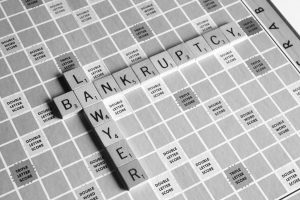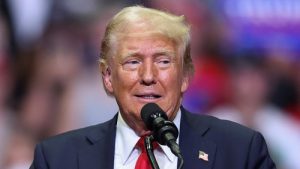The big dilemma facing the European Central Bank this week
It was a startling and dramatic moment when, in July, the European Central Bank raised interest rates for the first time in 11 years.

It was a startling and dramatic moment when, in July, the European Central Bank raised interest rates for the first time in 11 years.
Not the timing of the rate rise – the bank’s president, Christine Lagarde, had primed markets for an increase back in June – even though it was an event on which few would have bet at the beginning of the year.
No, it was the extent of the increase, which took the ECB’s main policy rate from -0.5%, where it had stood since September 2019, back to zero. It was a bigger rise than most economists and market participants had been expecting.
Markets look less likely to be caught out again when, on Thursday, the ECB’s main policy-making body, the Governing Council, meets again.
A rise taking the ECB’s main policy rate to 0.75%, only the second time in its history that it has raised interest rates by three-quarters of 1%, is now being priced in by investors. Another half-point rise, as in July, is the very least that is expected.
The reason for this is because, as in the UK, inflation in the eurozone is rampant.
While modestly lower than the July headline rate of 10.1% in the UK, as measured by the consumer prices index, the estimated headline rate in the eurozone of 9.1% for August is not far behind.
In a number of eurozone countries it is appreciably higher. For example, Eurostat, the EU’s main statistical agency, estimates that inflation in August was running at 10.5% in Belgium, 13.6% in the Netherlands, 11.1% in Greece and 10.3% in Spain.
In the Baltic trio of Latvia, Estonia and Lithuania, it is north of 20%. Were it not for the outlier of France – whose expected rate is just 6.5% because Emmanuel Macron has capped energy prices at vast expense to French taxpayers – the average headline rate of inflation in the eurozone would be closer still to that of the UK.
So the ECB has little choice.
Senior officials at the bank, such as the German representative on its executive board Isabel Schnabel, have been talking increasingly stridently about the need to come down harder on inflation.
At the recent get-together of global central bankers at Jackson Hole in Wyoming, Ms Schnabel gave a speech in which she spoke of the “sacrifice” needed to curb inflation.
As the economics team at investment bank Goldman Sachs told clients on Friday last week: “The inflation picture has deteriorated further since the July meeting…[there has been] a further broadening of underlying price pressures and slightly higher survey inflation expectations. The new staff projections are therefore likely to show a large upgrade to the 2022-23 inflation forecasts.
“Recent ECB commentary has been hawkish, with executive board member Schnabel arguing at Jackson Hole that the ECB needs to ‘act forcefully’ to ‘bring inflation back to target quickly’. Following her comments, a number of national central bank governors said that a 75 basis point hike should be considered next week.
“While other Council members – including executive board member [Philip] Lane – have advocated a steady pace of hikes, the pushback against calls to step up tightening has been limited.
“While not a done deal, we therefore think that a 75 basis point hike next week is more likely than another half-point step.
“Given market pricing, a 50 basis point hike would be a significant dovish surprise that we believe would be difficult to communicate in light of the strong inflation data.”
An interest rate rise of this magnitude, though, would be anything but pain-free for the ECB.
The eurozone economy, like that of the UK, is teetering on the brink of recession thanks to the surge in wholesale energy prices sparked by Russia’s invasion of Ukraine.
While GDP growth in Spain and Italy during the second quarter of the year was better than expected, thanks to a proper resumption of tourism to those countries for the first time since the pandemic, GDP growth in Germany, the biggest and most important economy in the eurozone, has been disappointing.
The latest Purchasing Managers Index (PMI) survey data from S&P Global, a key forward-looking indicator, suggests that Germany’s services sector suffered a contraction in activity in August for the second consecutive month with new business inflows falling for the third consecutive month.
Germany’s huge manufacturing sector has also been contracting for the last two months. The latest official data from Berlin, published on Tuesday, revealed that German industrial orders fell in July for the sixth month running.
And in France, the eurozone’s second-largest economy, the services sector has been losing momentum and is currently close to stagnation levels. The consensus among economists is that the eurozone is poised for three consecutive quarters of contracting GDP.
So, the ECB’s Governing Council will be mindful of the risks involved in tightening monetary policy too quickly even though some indicators have been quite encouraging of late. For example, partly reflecting tightness in the labour market being seen in other countries such as the US and the UK, the eurozone unemployment rate fell in July to a record low of 6.6%.
The bigger question for the markets, then, is where do interest rates in the eurozone peak – what is known as the ‘terminal rate’ in the jargon.
Right now, the betting is at around 1.75%, considerably lower than where the Bank of England’s policy rate is expected to peak.
But make no mistake, the ECB will be agonising just as much as the Bank will be over the risks of raising interest rates in the middle of a recession.
It is something that has not happened in the UK since the 1970s – and it will be unchartered territory for the eurozone.



